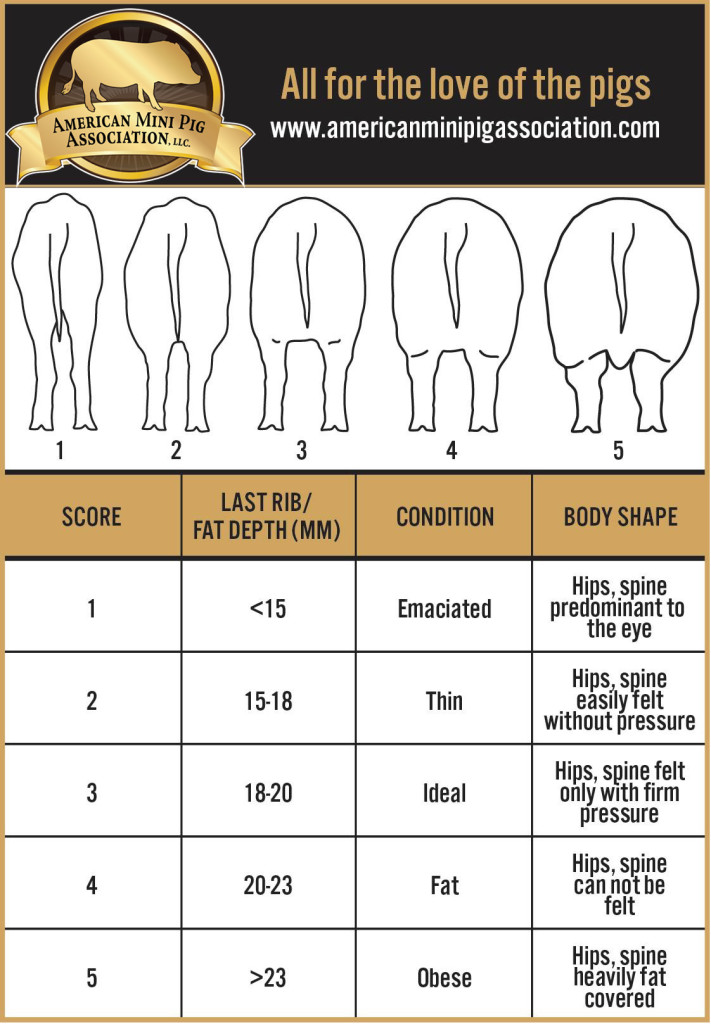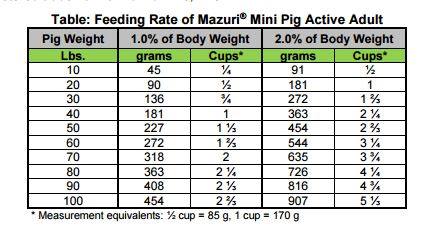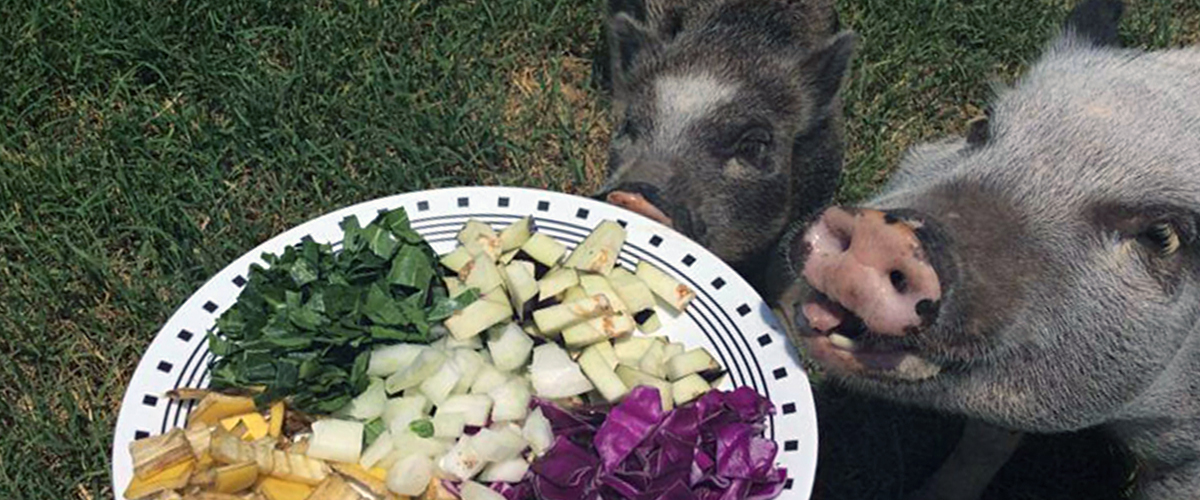Proper Diet for Mini Pigs
Healthy nutritional choices are a requirement when caring for a mini pig. Mini pigs seem to live in a constant state of hunger. You will rarely ever see a pig turn up its snout and walk away from food, unless they are ill. As with any animal, over feeding or under feeding is incredibly unhealthy and can ultimately shorten lifespan. The goal with mini pigs is to find a healthy balance of a nutritional pelleted diet along with a variety of vegetables that will keep their bodies a healthy shape while satisfying that seemingly never-ending hunger.
Pigs are omnivores. Their meals can come from a variety of food sources. Some owners choose to feed a raw or all-natural diet without the use of commercial pellets. There is more information on feeding a natural diet here. Mini pig pellets are the preferred choice for owners who are not comfortable taking the leap into exploring all that is required for a well-rounded natural diet. It’s good to research the natural diet article to discover food options for snacks or supplemental meals.
There are several brands of mini pig pellets, commonly referred to as pot bellied pig pellets. Popular manufacturers include Mazuri, Purina Nature’s Match, Manna Pro, and Country Feeds. These feeds are specifically designed to meet the nutritional requirements for minis. The recommended serving size is based on the pig’s body weight, but should be regulated and adjusted to allow for supplemental meals of vegetables, salads, grains, snacks, fruits, and grazing. Each pig will metabolize their food differently which makes having a one size fits all diet a challenge.
So how do you know what to feed and how much?
Watch your pig’s shape, skin, eyes, and behavior. Start with a base of recommended 1-2% of body weight pellets (see chart below). Add supplemental meals which can include raw, steamed, or cooked vegetables, leafy greens and salads, or any variety from the healthy foods list. If you pig’s shape is changing and moving to above a 3 on the body conditioning chart, adjust the amount of pellets and supplemental meals down. If you pig’s shape is below a 2.5 on the body condition chart below then increase the pellets given daily or offer more outdoor grazing and supplemental meals, snacks, and treats.
When determining how much to feed your pig you must consider all the foods and grazing your pig indulges in. We know that food can symbolize love and that is especially true for a pig, but we don’t want to love our pigs to death. Mini pigs are easily the most likely animal to become obese. The result of the extra weight/fat can take a serious toll on their overall heath, limiting mobility, compromising eyesight and hearing, not to mention the strain it is putting on their heart. It’s very difficult to get weight off a pig, but it is not impossible. If your pig is above a 3.5 on the body conditioning chart below, please take the steps to reduce the extra treats, and overall daily food that is offered. There is more information on weight loss planning for mini pigs here.
Underfeeding a mini pig is just as dangerous as overfeeding. Mini pigs, like humans, need calories and nutrients to maintain their activity levels and overall healthy. You should never be able to see your pigs hip bones or spine. Feeding below the recommended manufactures guidelines or limiting feed in an attempt to control growth can cause incredible suffering, permanent damage to organs, and shorten the lifespan of your pig.
An example of a healthy mini pig daily meal plan:
The recommended pellets per weight of your pig split into two or more feedings. Some owners find a morning and evening meal time of pellets works well. Some owners prefer to split the daily allowance of pellets into 3 or more feedings per day. You can incorporate a food dispensing toy for one feeding, or sprinkle pellets into a rooting rug, blanket or rooting box for enrichment while dining.
A teaspoon of coconut can be added daily for healthy skin and coat.
A spoonful to a quarter of a can(depending on your pigs size) of canned pumpkin or tablespoon of yogurt to promote GI health.
Daily supplements–Read more about supplements here.
A small salad of mixed greens and/or a small serving of raw or cooked vegetables. Portion sizes would be related to your pig’s size and shape.
Daily treats or training rewards should be healthy such as small bits of veggies, unsalted nuts, unsalted air popped popcorn, cheerios or a whole grain cereal. Fruits and dried fruits in moderation.
Foods to Avoid
Dog and cat food should be avoided completely. These foods are heavy in sodium and can be deadly for your pig.
Pig grower is not designed for mini pigs. This feed is formulated to increase the size of farm breed pigs rapidly.
Chicken feed.
Simple or refined carbohydrates, such as white potatoes, white bread, rolls, processed cakes, chips, cookies, high sugar content items. A sugary treat for a special occasion is acceptable, but should not be a daily item on the menu.
See the Toxic Plants and Foods List for more information.
Find more ideas for healthy foods here. You can find meal recipes, treats, birthday cakes, natural diet recipes in the AMPA Mini Pig Cookbook.

Mazuri and Manna Pro Brand Mini Pig Active Adult Feeding recommendation

- Mazuri and Manna Pro Brand Mini Pig Active Adult (1).docx
- http://www.mazuri.com/minipig.aspx
- http://onlinelibrary.wiley.com/doi/10.1111/j.1600-0773.1997.tb01981.x/pdf
FORMULA TO CALCULATE PIGS DIET AMOUNT BASED ON 2% BODY WEIGHT
1. Determine what your pig weighs or SHOULD weigh (this is, of course, an estimate). So, if your pig weighs 200 pounds, but should weigh 150 pounds, you should feed him a 150 pound diet.
2. For correct nutritional balance, your pig should eat 2% of his IDEAL weight per day. Get a scale for the food, you will need to weigh it. So for our IDEAL 150 pound pig:
150 X 0.02 = 3 pounds of food total per day.
If you do not have a scale, remember that a cup is 8 oz, or ½ pound.
3 pounds per day = 2 cups x 3 = 6cups
So our 150 pound pig should ideally eat no more than 6 cups of food per day total.
